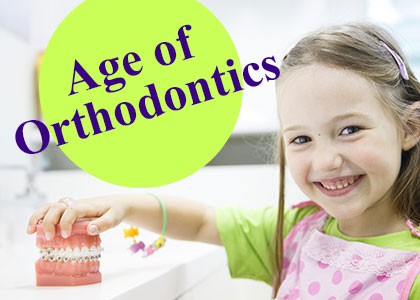 These days, people of all ages receive orthodontic treatment, but many of us still associate braces with the awkward and angsty pre-teen and teen years. While some kids are excited about braces because they know some “cool” teenagers who have them, others may worry about how braces might look or feel.
These days, people of all ages receive orthodontic treatment, but many of us still associate braces with the awkward and angsty pre-teen and teen years. While some kids are excited about braces because they know some “cool” teenagers who have them, others may worry about how braces might look or feel.
Mom and Dad are likely preoccupied with financial concerns of orthodontic treatment along with all the questions any parent has about such a major decision about their child’s health. Mullica Hill Family Dental is here to share some information to help the family start talking about braces – together.
Kids need braces for the same reasons as adults – teeth are crooked, overlapping, overcrowded, or they have malocclusion, a condition in which the upper and lower jaws are different sizes or don’t fit together properly. An overbite means the upper jaw is larger or protruding, while an underbite means the lower jaw is larger or protruding.
Sometimes tooth and jaw problems are the result of premature baby tooth loss, accidents, or habits like excessive, long-term pacifier and baby bottle use or thumb sucking. Most often, though, the need for braces is an inherited trait – so if you needed braces, it is likely your child may need them as well.
A misaligned bite that isn’t corrected can lead to teeth grinding or TMJ dysfunction and asymmetrical growth of the face, while alignment issues and crooked teeth lead to other potential problems, such as:
Unfortunately, children with misaligned teeth may also be teased about their appearance, which can lead to lack of confidence and lower self-esteem.
There is no set age for a child’s first visit to an orthodontist, but many orthodontists recommend a visit once the permanent teeth start coming in – around the age of seven years. At this age, bite and crowding problems will already be visible. Seeing an orthodontist this early doesn’t necessarily mean a child gets braces immediately but will allow more time for diagnosis and treatment planning well in advance.
A common misconception about orthodontics is that you should wait until your child’s teeth and jaws are more fully developed in their early teen years. However, early orthodontic treatment is actually easier and takes less time because it takes advantage of the fact a child’s jaw is still growing into place, so we have an easier time molding it into the ideal shape and alignment. Even with early intervention, however, additional treatment may be needed as the child grows older, but treatment may be shorter and less involved (less expensive, too!) if you take action at a younger age.
An orthodontist is the best resource for deciding when and if a child needs braces and what type of braces or other devices will work – every child is different. Most kids need traditional braces with brackets, wires, and rubber bands, but braces have improved a great deal over the years to include white or clear ceramic braces that are not as visible as the metal-toned ones of the past – there are even types of braces that go discreetly behind the teeth (lingual braces).
Clear plastic aligner trays such as Invisalign® are also available, but that type of orthodontics is only appropriate for certain cases. Once braces are on, your child will have to visit the orthodontist or dentist every few weeks for monitoring and adjustments.
No two sets of teeth are alike, so it will depend on the problems your child’s orthodontist or dentist is trying to solve, but the average time a child wears braces is about two years. After their braces come off, your child should wear a retainer to keep the teeth from shifting back to their original places.
It’s easy for food to get stuck in metal braces, so kids will have to be extra diligent about keeping them clean. Brushing after meals and flossing daily are very important – we can provide special flossers or dental picks that make it easier to clean around braces and between teeth. Regular dental cleanings and checkups are also highly advised during orthodontic treatment, which is convenient when your general dentist is providing your orthodontic services like we do here at Mullica Hill Family Dental!
Children wearing braces should avoid popcorn, hard and sticky candy or gum because they can damage braces. If a child has a loose wire or bracket or a wire is visibly poking out of the mouth, they should see the orthodontist or dentist right away. Kids wearing clear plastic aligners should remove them while eating and cleaning their teeth.
If you have more questions about braces for your child or want to schedule a consultation with Drs. Bo and Christina Levitsky, contact us today! Drs. Bo and Christina Levitsky are general dentists providing orthodontic services in Mullica Hill.
The content of this blog is not intended to be a substitute for professional medical advice, diagnosis, or treatment. Always seek the advice of qualified health providers with questions you may have regarding medical conditions.
7 Myers Dr. Unit A
Mullica Hill, NJ 08062
| Monday | 8AM-5:30PM |
| Tuesday | 8AM-7:30PM |
| Wednesday | 8AM-3PM |
| Thursday | 8AM-6PM |
| *Saturdays | 8AM-12PM |
| *Open select Saturdays. | |
Please call us at (856) 214-3769 or fill out the form below to request an appointment.
Error: Contact form not found.
Schedule an exam and cleaning to keep your smile healthy through the holidays. We look forward to seeing you!
(856) 214-3769 Schedule Now Close Reminder*
*and don't show this again for 7 days
